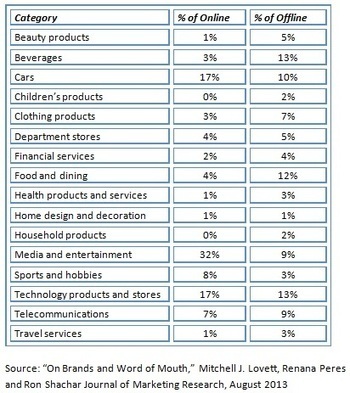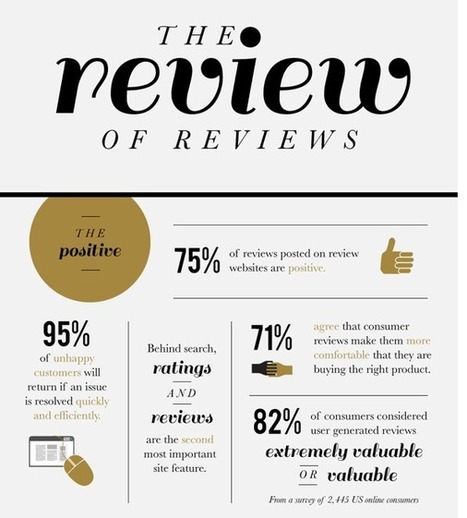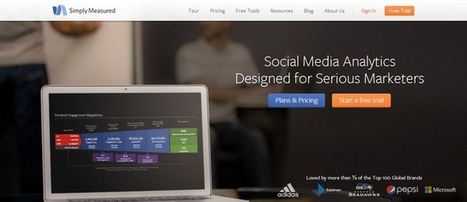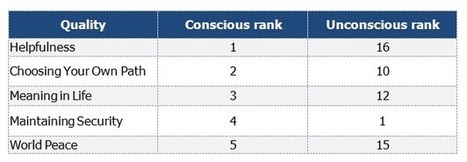 Your new post is loading...
 Your new post is loading...
It might be early days, but marketers are seeing little return when advertising on Snapchat. They also seem more interested in spending ad dollars on the company’s newfound rival: Instagram. That’s according to a series of studies published by RBC Capital Markets in partnership with Ad Age, where some 1,600 marketers were surveyed in an attempt to gauge the pulse of the digital advertising industry. The sobering news underscores the uphill battle Snapchat faces as other platforms like Facebook-owned Instagram and Messenger mimic its features. It also shows Snapchat is a far cry from being in similar company to Google or Facebook, which both received significantly higher marks from marketers. Between Twitter, Facebook, LinkedIn, Google, Yahoo, AOL, and YouTube, Snapchat only outperformed AOL in terms of ROI, scoring a 3.43 out of a possible 8 points, according to the survey (AOL scored a 2.88). Google (6.98) and Facebook (6.72) led the pack, performing nearly twice as better than Snapchat, RBC said....
The holiday season is once again upon us and this year marketers have an unprecedented opportunity to blow their sales out of the water. For the first time in history, consumers over 50 make up the majority — 51 percent — of all of consumer spending according to just-released data from the U.S. Consumer Expenditure Survey.
While marketers are preoccupied with Millennials — who became the biggest adult age demo this year — consumers over 50 control 70 percent of our country’s wealth, making them a significantly greater holiday sales opportunity than their kids.
One might expect that 50+ would account for the majority of health (63%) and insurance (68%) expenditures. However, when it comes to buying for everyone on their holiday lists, consider that people 50+ are now responsible for 51 percent of all entertainment spending as well as 57 percent of big ticket items such as new cars and trucks....
Mason Nelder, Director of Consumer Insights at Verizon, joins the Social Pros Podcast this week to discuss the incredible advantages, the challenges, and the long-term company-wide transformations made possible through the customer insights gained....
So, how do you prove that this system is actually working? Verizon has actually moved away from proving the results of social media. Instead, it’s more about proving out how they’re dealing with issues they’re seeing come up. (highlight to tweet) It used to be about “If we do this, we save this much money,” or “If we do this, we make the experience this much better.”
Now Mason and his team are trying to wrap their heads around how to measure that experience in total.Looking at the long-term effects of the changes Verizon makes based on consumer insights, Mason and his team are looking at what people think about the brand and how easy it is to do business with Verizon. “The long-term effect is: Do people stick with you? Do people think you’re easy to do business with? Do people love you because of how you connect them to their network?”...
comScore's experts predict desktop ecommerce to reach at least $53 billion while mobile is expected to bring in nearly $8 billion. Overall that indicates a 16% increase in spending over the 2013 holidays. Since Q4 of 2010, ecommerce growth has increased at least 10% Quarter over Quarter.
"The 2014 online holiday shopping season is shaping up to be a bright one with more than $61 billion in spending expected, representing a year-over-year growth rate of 16 percent across desktop, smartphones and tablets," said Gian Fulgoni, Executive Chairman Emeritus of comScore....
Marketers spend most of their time trying to appeal to their target demographics, but when it comes to women, many of them are missing the mark. Given that women make up half the population and have a disproportionate amount of purchasing power, isn’t it in your best interest to try to understand them?
Here are 23 surprising facts you probably didn’t know about women and advertising. - Women account for 85% of consumer purchases (She-conomy) - Despite this, 91% of women say advertisers don’t understand them...
...Let’s start with the first excerpt shall we for this speaks directly to the ominous title of this article. Yes, while some will laud the 35% of marketers who are investing in a seamless or integrated shopping experience, I for one would rather focus on the 65% who are not and in turn not giving the consumer what they want.
The statistics come courtesy of a survey conducted by The E-tailing Group Inc. Perhaps even more troubling is the fact the 35% of the respondents who say they expect to offer a seamless shopping experience plan to do so in 2014 or 2015. Doesn’t that in turn mean the 65% who DON’T plan on offering this to consumers will go at least until 2016 before even beginning to plan for it?...
When you know more, you can do more. Social Media’s ROI can be tracked. But keep in mind that tracking is only the measurement of the result of your efforts. You must be able to tie those results back to your objectives to get real return on investment.The following are Facebook objectives and results we track here at Kruse Control on a weekly basis...
The volume, velocity and variety of data created in the modern digital world is truly astounding. Here are some facts and figures that illustrate that point...
Here at eSpatial we are very interested in the subjects surrounding big data, data management and data visualization. After all, our goal is to help businesses and organizations make the most of data of any kind by turning it into engaging and useful visuals. (You can see examples of how we do this here.)Here are some facts and figures I’ve come across in the last while that illustrate that point.
- The volume of data created by U.S. companies alone each year is enough to fill ten thousand Libraries of Congress. (Source) - According to McKinsey – a retailer using big data to the full could increase its operating margin by more than 60%. (Source) - Zuckerberg noted that 1 billion pieces of content are shared via Facebook’s Open Graph daily. (Source)...
Robust new study shows drivers of word of mouth differ considerably for online vs. offline word of mouth, emotions tend to rule more offline with friends. These findings are significant for brand marketing decisions.
It has been well documented by now that word of mouth and social media are significant forces in the consumer marketplace. Word of mouth is the most trusted source of information for consumers around the world according to Nielsen, and there is now measurable proof that social voice drives product sales both directly and indirectly. Further, we at Keller Fay have produced research that continues to surprise people: While many assume the rising power of word of mouth is linked to the rise of social media, only 10% of conversations about products, services and brands take place online while 90% still occurs offline — at home, work, or when gathering in social settings of various sorts.
A new academic study provides the most comprehensive analysis ever undertaken of the consumer motivations and brand characteristics that lead people to talk online and offline and reveals significant differences between the two. According to the research, “Online data does not reflect well the offline behavior. Word of mouth is not channel neutral. One cannot automatically generalize the results from online to offline.” This suggests it is critically important for marketers to understand when digital strategies for motivating word of mouth are appropriate and likely to be effective, and when offline strategies are most appropriate....
Get tips on how to improve your social media marketing that all stem from real research and data.... ... As a professional social media scientist and part time unicorn hunter, I spend a lot of time chasing down and busting social media unicorns-and-rainbows myths and superstitions -- advice that has no basis in facts -- with real data and science. I've conducted quite a bit of research about social media marketing, and as a result, I've gotten quite a lot of insight into the tactics that do and don't work. So I decided to compile a SlideShare highlighting 20 of my favorite data-backed ways to make your inbound marketing efforts in social media more successful. Check it out, and share your favorites using the tweet links below!...
It’s not even just e-commerce sites that allow reviews either. Local Directory sites allow customers to review businesses, whether the business encourages them or not. For a lot of businesses the ease of getting reviews from clients should be an opportunity to grab with both hands. Surprisingly, many businesses are ignoring this. More worryingly, if past clients have gone online to complain about poor service publicly on a third party website some business owners are taking the attitude of “out of sight, out of mind”. I even spoke to one business owner who said that if anyone read online reviews about his business he wouldn’t want them as a client anyway! So do people read reviews, and more importantly do they believe them? PeopleClaim have put together this Infographic looking at some statistical measures of ratings and reviews. They were curious as to how many people were searching for reviews, what they were finding, and what type of decisions they were making based on this information....
Social media is full of numbers, but most of the time we don't use them in any actionable way. The reason is simple: Social metrics are often too complicated to understand, and they provide few clues on how we can improve our success. The reality is that the return on social media marketing can vary widely for each business. Some companies see quick and immediate returns, while others fail to see much of anything at all. What could the problem be? And, more important, how can we be sure that our business won't fail online? This article looks to answer those questions by offering a few quick-and-dirty methods for gauging your online marketing strengths and weaknesses....
|
The online retail ecosystem is fast evolving, and increasingly, shoppers no longer simply go to the nearest store. Rather, they grab the nearest digital device. And with the world at our fingertips, why only shop domestically? In fact, digital analytics firm eMarketer projects that online retail sales will more than double between 2015 and 2019 and account for more than 12% of global sales by 2019. Retail therapy is giving way to e-tail therapy.
To gain a better understanding of how consumers are navigating the connected commerce landscape, the Nielsen Global Connected Commerce Survey polled respondents in 26 countries. We looked at how consumers are using the Internet to make shopping decisions both in stores and online, and we examined what they’re buying, where they’re purchasing and how they’re paying for goods and services.
While connected commerce is still largely a domestic affair, with consumers primarily ordering from retailers in their own country, cross-border ecommerce is a growing phenomenon. Shoppers are increasingly looking outside their country’s borders, as more than half of online respondents in the study who made an online purchase in the past six months say they bought from an overseas retailer (57%).
Nearly three-quarters of Indian respondents* who purchased online in the past six months say they bought items from an overseas retailer (74%). But this isn’t just a developing-market trend. Roughly two-thirds of respondents in the Western European countries in the survey say they purchased from an overseas retailer, including 79% in Italy—the highest percentage in the online study—and 73% in Germany....
When we talk about the “digitization” of society, we often focus our attention on the younger generations. And it makes perfect sense to do so. They have grown up with the technology in their hands. They don’t know of a reality in which they can’t Google something, or WhatsApp someone, or post a pic on Instagram. In turn, businesses have targeted this younger generation—the Millennials—with rich, engaging digital experiences in an effort to win their hearts, minds, and wallets. Only, in focusing just on Millennials, they are alienating a huge demographic; a demographic that is spending more time online that any other.
Before I do the big reveal, let’s look at how “time spent online” has changed in just a year....
So who’s spending all this time online? If not Millennials, then which demographic is it? Drum roll please… Baby Boomers. That’s right, where 45% of our total sample pool spent more than 15+ hours online outside of work, 51% of Baby Boomers indicated that they spent 15 or more hours online each week....
Generation Z represents the first generation of the 21st century, and is comprised of America’s youth–those aged 2 to 19. This diverse group is already making an impact with marketers, especially the sweet spot of tweens and teens aged 11-16.Here are three facts you need to know about Generation Z...
“If you know the enemy and know yourself you need not fear the results of a hundred battles” - Sun Tzu
Business can learn a lot from ancient military wisdom. Armies have been using spies for millenia to report on the other side's strategies, weaponry, supplies, morale, and general's hangover.
While binoculars and a fake mustache may have been the most important tools for most of spying history, the internet age has provided us with somewhat more advanced tools to keep track of our competitors. Take a look at the following list of free(mium) tools you can use to unravel the actions and underlying strategies of your competition....
Creating satisfying interaction experiences for buyers today is proving to be more complex than most organizations had guessed. Various surveys and reports continue to put satisfaction with content and information at or below 35% range.
The translation for me, when factoring in the qualitative interviews conducted with buyers over the past year, is not only is there a lack of satisfying content, but also a lack of meaningful experiences...
The empowered customer is a common thread that has rocked—and continues to rock—all industries.
Whether you’re an established company or a thriving startup, here are 9 trends that have tipped the balance in favor of your customers.
A few months ago a report from YouGov reported a "large increase" in the number of UK consumers who had stopped using social media because they'd had enough of social media.
Another report in the US found consumers not liking the large number social workers on the Internet.
...The survey asked participants aged 16-54 to rate the extent of their agreement with the statement that there are too many companies involved in social networking. Within the US, almost half – 47.1% – of respondents who had been active on any type of social network in the previous 6 months indicated some level of agreement. Just 18.6% disagreed.....
There are many things that influence human behavior and color is definitely one of them. The effect is often so subtle that we have no conscious realization that we are being influenced by color...
Research shows however, that color can actually influence buying behavior. In fact, color has the power to evoke strong emotional responses and depending on your culture and your geographic location, using the wrong color could be enough to turn potential and existing customers away from your business. As a result many marketers, like myself, have studied the meaning of color and the psychology behind color. So let’s take a 50,000 foot view of color and give you some tips to help you influence customers the right way....
A new study by Y&R and Dr. Joel Weinberger of Adelphi University shows that consumers' unconscious desires are at odds with what we say we want.
Ad firm Y&R teamed up with psychologist Dr. Joel Weinberger of Adelphi University to design a study that revealed respondents’ subconscious preferences using implicit association testing. The study, tellingly named “Secrets and Lies,” has been released and is available here.
Three key findings:
1. What consumers say is important is often the opposite of what truly is important to them.
In the chart below “conscious preference” is what people said they held to be of value. “Unconscious preference” shows how testing determined what they actually, subconsciously, valued. These global responses came from Brazil, China, and the US...
New research into social media behaviour has been unveiled, finding that Twitter and Facebook users fall into one, or more, of 12 distinct social media personality types. The personality types are based on the results of a month-long, fly-on-the-wall experiment – where people’s online behaviour was monitored constantly for four weeks – and on an associated nationwide survey examining people’s social media attitudes and behaviours....
Popular social networking sites such as Facebook, Twitter, and Pinterest attract some segments of the American population more than others, per results [pdf] from a new study from the Pew Research Center’s Internet & American Life Project. While that’s not an earth-shattering revelation by any means, the results do offer some intriguing glimpses into which segments prefer which sites. Below are some highlights from the study, ordered by popularity of the social network. (Note that all percentages below refer to percentages of internet users, rather than percentage of Americans.)
|



 Your new post is loading...
Your new post is loading...










![20 Data-Backed Ways to Upgrade Your Social Media Marketing [SlideShare] | Public Relations & Social Marketing Insight | Scoop.it](https://img.scoop.it/pKfmDj0L0HLuUVZgmQZrKTl72eJkfbmt4t8yenImKBVvK0kTmF0xjctABnaLJIm9)



















Snapchat doesn't seem to be delivering results according to marketers.